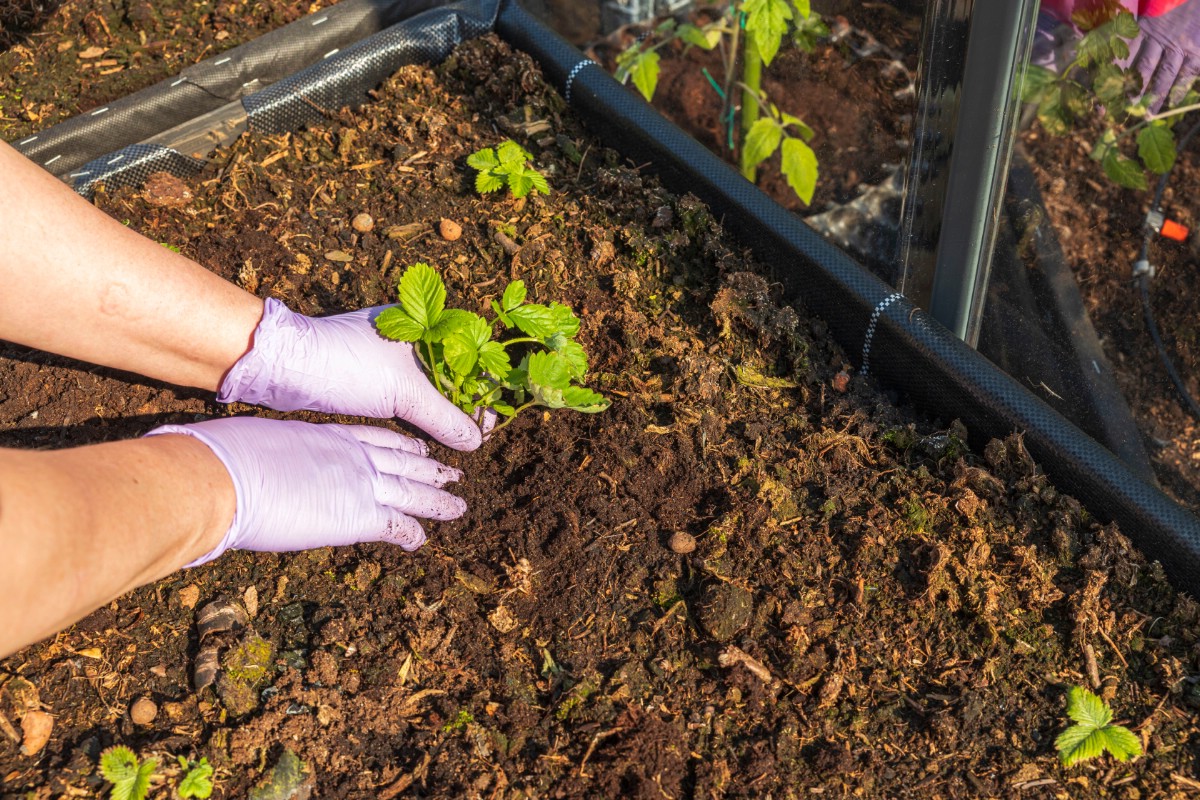Are you thinking about growing your strawberries in a raised bed this year? Do you have some questions? Here is everything you need to know about growing strawberries in a raised bed.
Growing juicy, flavorful strawberries in raised beds can lead to bountiful harvests But proper spacing is crucial to prevent overcrowding and allow each plant adequate room to reach its full potential This comprehensive guide will examine optimal strawberry spacing in raised garden beds based on variety, intended use, and other factors.
Spacing Guidelines by Strawberry Type
There are three main types of strawberries to consider when planning spacing in raised beds
-
June-bearing varieties produce a big crop of berries all at once in early summer. They require wider spacing, typically 12-18 inches apart.
-
Everbearing strawberries yield smaller flushes of fruit throughout the growing season. Space plants 8-12 inches apart.
-
Day-neutral varieties bear continuous small harvests of berries all season long. Space 8-10 inches between plants.
Day-Neutral
Day-neutral strawberries are the most compact and best suited to close spacing in raised beds. Alpine types send out few runners and form tight clumps. Space them 8-10 inches apart in all directions. Popular day-neutral varieties like ‘Albion’ and ‘Seascape’ produce heavily with tight 10 inch spacing.
Everbearing
Everbearing strawberries produce fewer runners than June-bearers, so they can be spaced closer together, about 10-12 inches apart. But give them up to 12 inches of room if your raised bed has very fertile soil. Popular everbearing varieties include ‘Ozark Beauty’, ‘Fort Laramie’, and ‘Quinault’.
June-Bearing
June-bearing strawberries send out long runners and form wide mounds. Space them farther apart, from 12-18 inches depending on variety. Closer 12 inch spacing will yield more berries sooner. Wider 18 inch spacing is more economical.
Spacing Based on Intended Use
In addition to variety, strawberry spacing depends on your intended use for the harvest and goals for the raised bed itself.
-
For fresh eating, space plants 8-12 inches apart for maximum production.
-
For preserves, space 12-18 inches apart since abundant runners will form more new plants.
-
To fill a bed quickly, use tight 8-10 inch spacing to get a solid patch sooner.
-
If you’re on a budget, use very wide 18 inch spacing so runners propagate new plants.
Closer spacing yields smaller berries but higher total volume. Wider spacing produces fewer but bigger individual berries. Find the ideal balance for your needs.
Strawberry Spacing in Raised Beds
Raised beds offer excellent drainage and weed control for strawberries. Here are some raised bed spacing guidelines:
-
Leave 8-10 inches between day-neutral plants
-
Allow 10-12 inches between everbearing varieties
-
Give June-bearers 12-18 inches of space
-
For fresh eating, use spacing on the tighter end of the range
-
For preserves, spacing can be on the wider end
Raised beds should be no wider than 3-4 feet so the center is reachable. Length can exceed 12 feet. Ensure the root zone is at least 10-12 inches deep. Standardize your beds for easier planting over time.
Other Tips for Productive Beds
Proper spacing lays the foundation, but there are more tips for maximizing strawberry harvests in raised beds:
-
Choose disease-resistant, heavy yielding varieties suited to your climate
-
Fill beds with loamy, well-draining soil high in organic matter
-
Start new plants from disease-free crowns or plugs, not runners from old beds
-
Pinch off the first blossoms to establish vigorous growth
-
Prune runners regularly so plants focus energy on fruiting
-
Apply 2-3 inches of organic mulch like straw around plants
-
Use drip irrigation to conserve water and prevent fungal diseases
With the right spacing for your variety and goals, plus attentive care, your raised strawberry patch will reward you with abundant juicy berries. Adjust spacing over time as plants mature and fill out the beds.
When planting strawberries in a raised bed, allot each plant adequate space to grow to its full size and produce at its peak. Day-neutrals can be spaced as close as 8-10 inches apart. Everbearing varieties need 10-12 inches. Give June-bearers 12-18 inches depending on your desired output. Tighter spacing yields higher volumes but smaller berries. Wider spacing results in fewer but bigger fruits. Find the right balance for your needs and enjoy the fruits of your strategic spacing decisions.

How do I plant strawberry plants in a raised bed?

The process of planting strawberries in a raised bed is just like planting them in the ground.
About 2 weeks before planting your strawberries, fertilize the soil with a slow-release fertilizer, even if you are using purchased soil. Your strawberry plants will grow here for several years and will need all the help you can give them if you want a big, sweet harvest.
If you are planting strawberry crowns, first trim the bare roots to 4 inches long. This will promote stronger root growth as your plants establish themselves. Next, soak them in water or compost tea for 1-2 hours to rehydrate them.
Whether you are planting crowns or live plants from your local nursery, make sure the whole crown is above the soil and all the roots are below the soil. Burying your strawberry plant too deep will impact berry and runner production and burying it too shallow will affect root development (which also messes up berry production). The soil level should be right at the bottom of the crown for the best harvest you can get.
Water your strawberry plants deeply each time and allow the top 2 inches of soil to dry out between watering.
Add a mulch of straw or pine needles when you have finished planting your strawberry plants. A light mulch will suppress weeds, regulate the soil temperature, retain moisture, keep your berries clean and away from soil-dwelling pests, and add necessary organic matter over time.
What is the best soil for growing strawberries in a raised bed?
The best soil for strawberries is sandy loam soil which is rich in organic materials and drains well. Clay soil that is improved by mixing in compost and manure is the second-best choice.
The easiest way for beginners to fill your raised strawberry bed is with 2 parts topsoil: 2 parts potting soil: 1 part compost. Exact measurements will vary based on the size of your raised bed. Just remember: the goal is rich, light, nutrient-rich soil.
The soil should be slightly acidic– between 5.5 and 6.5 on the pH scale. Most potting mixes fall into this range and compost is naturally acidic. It is always a good idea to check your pH before you start gardening anyway. You can buy inexpensive soil testing kits or request a test from your local extension office.
How to Plant Strawberries in Raised Beds
FAQ
Do strawberries do well in raised beds?
When it comes to soil, they prefer well-draining, slightly acidic soil. Amend the soil with compost for added nutrients and ensure good drainage to prevent waterlogged roots. Raised beds are ideal for growing strawberries; they promote fluffy, well-drained soil and help prevent invasion from weeds and grass.
How many strawberries can I grow in a 4×8 raised bed?
In a 4×8 raised bed, you can typically plant around 12 to 18 strawberry plants, depending on the spacing recommendations for the specific variety you choose. This allows each plant ample space to spread and produce bountiful harvests of delicious berries throughout the growing season.
Do strawberry plants like to be crowded?
Strawberry plants are small, and they can easily fit into most pots. But, just like most other plants, they like their space and hate to be crowded. When growing strawberry plants in containers, the temptation is to let more plants root than the small area can support.
